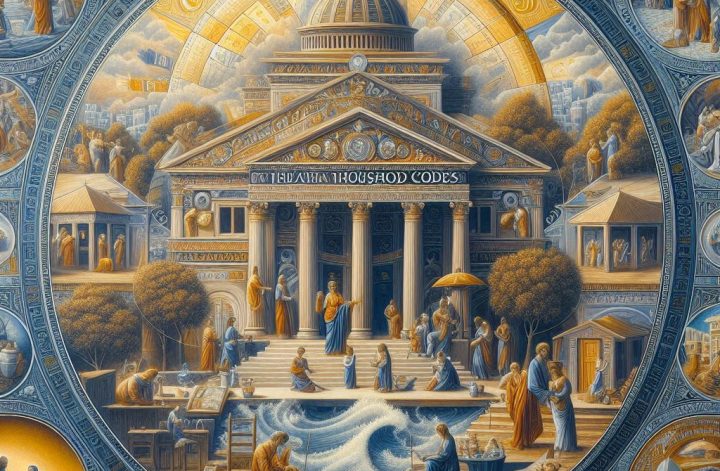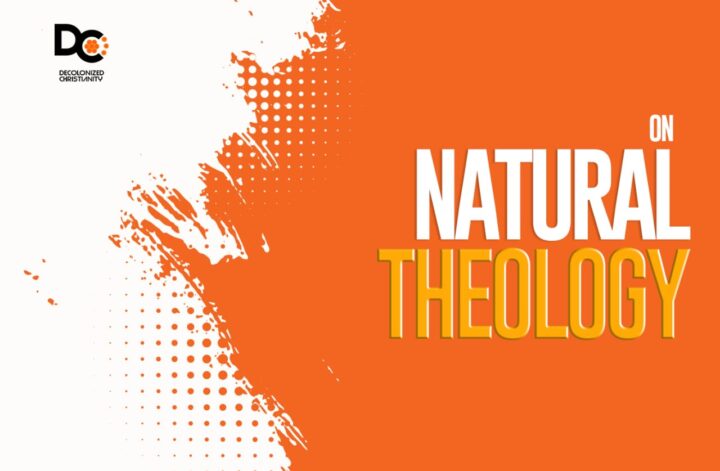Introduction
If the Copernican revolution defended by Galileo Galilei displaced humans from the center of the universe, the Darwinian revolution completed what was left by stripping humans of any sense of unique worth. Whereas people had embraced the idea of being created by some supreme being as the science of human origin, Darwinism offered a radically different narrative in which a human is no more special than a SARS-CoV-2 particle. Indeed, the former owes its existence to viruses which are her genetic ancestors. While not challenging the Gospel of Jesus, the Darwinian idea seeing 32ly invalidates the message of the first few pages of the Bible. For the theologically minded persons, those were very trying times. Theologians and skeptical scientists levied critiques against Darwinism—a not unusual development; new scientific ideas always benefit from reviews. These critiques helped refine the Darwinian thesis. Today, Darwin-inspired evolutionary science is the scientific consensus—even if substantive debates continue about various aspects of the dogma. All in all, theology yielded grounds to the unstoppable mighty Darwinian force in all of this.
Theology throws a few weak punches
Once it became clear that Darwinism had come to stay, theologians formulated all sorts of views in response. These responses range from those that vehemently reject Darwinism and stuck to a literal reading of the Genesis account to those that saw God using evolution to achieve his creative goals. Understandably, views closer to the former are deemed anti-scientific—in any case, anti-mainstream science—while the latter camp may be guilty of concordism, a hermeneutically problematic way of reading the Bible through the lens of science. In this article, I shall not discuss any of the camps further. Instead, I shall focus on a distinct group of views that accept evolutionary science as accurate and then carefully seek where and how this science legitimately presses on theology. Specifically, I shall interact only with the views of Joshua Swamidass and William Craig.
Theology forcefully fights back: Swamidass’ Solution
Swamidass seeks to understand if modern science makes a traditional understanding of Genesis impossible. Throughout history, most readers of Genesis’ account of Adam and Eve held certain beliefs, such as the primeval couple being humans’ universal ancestors. Some in the scientific community have argued, based on population genetics, against the plausibility of this belief. Hence, Swamidass sets out to rigorously comb through the scientific evidence to see precisely where they lead. To do that, he needs a testable hypothesis. Here are the elements of the thesis concerning a historical Adam and Eve (25-26):
-
-
- They lived recently in the Middle East….They are genealogical ancestors of everyone….
- They are de novo created….
- Interbreeding between their lineage and others….
- No additional miracles allowed….
- The two findings of evolutionary science….
-
Swamidass’ assumptions should be evident from the hypotheses above. (1) to (3) recapitulates the traditional understanding of Genesis. Swamidass, a computational biologist and physician, recognizes that (3) cannot, strictly speaking, properly be a conclusion of science. He writes, “It is an ‘improper’ hypothesis, in that it includes a miracle, so it cannot become a proper scientific conclusion. More importantly, however, it is not a sufficiently clear definition to assess with evidence” (26). Indeed, (5) is only necessary because of (3). (6) captures the evolutionary ideas of descent with modification and “human” population never dipping down to a single couple. The unique feature (and strength) of Swamidass’ approach is with (4).
Generations of Bible readers and Sunday School students had wondered whether there were no other biological humans outside the Garden long before Charles Darwin was born. The biblical data on this issue is ambivalent. People have always asked where Cain got his wife, and of whom did Cain speak when he said, “whoever finds me will kill me” (Gen 4:14)? A straightforward reading of the Genesis account would suggest that there were only three people alive at that point – Cain and his parents. So, how in the world, within a space of three verses, did Cain find a wife (Gen 4:17)? Swamidass’ fourth hypothesis posits that there are indeed biological humans outside the Garden. If you think this raises a lot of questions, you are right. But first, let’s get some terminologies straight.
There often is a simple but pervasive error involving the confusion of genetic ancestry with genealogical ancestry in scientific commentaries bordering on the historical Adam and Eve. Genetic ancestry “traces the history of stretches of DNA in our genomes, using recently invented technology” (33). For instance, scientists conclude that humans and chimpanzees have a common ancestor based on shared stretches of DNA. It is on a similar basis that paternity tests are conducted. The more closely related two organisms are, the more stretches of DNA they will have in common.
On the other hand, Genealogical ancestry cares nothing about stretches of DNA. As Swamidass stresses above, genetic ancestry became possible upon the recent invention of relevant technologies. Before the DNA revolution, the ordinary sense of ancestry is genealogical, which traces who gives birth to who. Swamidass writes, “Our fathers, mothers, and grandparents are our ancestors. Going back into our history, all their grandparents are our ancestors too.” (32)
Two points are worth making here. First, the Bible (and the rest of the world before the 20th century) only speaks of genealogical ancestry. There are several genealogies in the Bible. Second, genealogical ancestry does not always imply genetic ancestry. A child’s mother and grandmother are fully her genealogical ancestors but only fractionally her genetic ancestors. The mother is 50 percent the child’s genetic ancestor, while the grandmother is only 25 percent. As Swamidass points out (36), “Genetic ancestry continues to dilute each generation 1/8, 1/16, 1/32 . . . to a number so small that it is unlikely a descendant has any genetic material from most of their ancestors.” In a few generations, a person may get exactly zero DNA from her ancestor. In other words, a person’s genealogical ancestor may not be her genetic ancestor. Of course, if someone is one’s genetic ancestor, she is also one’s genealogical ancestor. But the relationship is not necessarily true in reverse.
With these clarifications in mind, we can now better understand Swamidass’ idea. He hypothesizes that Adam and Eve are the genealogical ancestors of everyone alive (by first century AD). They need not be our universal genetic ancestor. This idea is his second postulate. What about the first postulate that Adam and Eve lived recently in the Middle East some 6000 years ago? This one needs some unpacking.
Today’s scientific consensus is that human evolution happened over several thousands of years. Hence, the idea is incompatible with universal human ancestors coming to the scene only 6,000 years ago. Swamidass postulates that the findings of evolutionary science in this area primarily concern the biological humans outside Eden. Their story is what evolutionary science tells: they descended with modifications from non-human species over very long periods. However, by the time of Adam and Eve, the people outside the Garden are fully biologically human. But some 6,000 years ago, God decided to create de novo another set of humans, biologically similar to the people outside the Garden. Eventually, the two populations interbred so that by 1 AD, Adam and Eve could be appropriately said to be the universal ancestors of all humans alive.
Theological problems?
As it turns out, there is nothing in modern (evolutionary) science against this idea. Of course, science can also not confirm it. But the idea respects every datum in contemporary evolutionary science while also largely staying true to the text of Genesis. I say “largely” because one may argue that the Bible does not unequivocally say that there were humans outside the Garden. I should stress that positing the existence of such humans solves many problems, including the age-old question of where Cain got his wife.
There are other seemingly more severe theological problems with Swamidass’ proposition. We should notice that, in his view, Adam and Eve are not unique universal ancestors. Indeed, Adam and Eve are only one set of several universal ancestors. Furthermore, before Adam and Eve, some other persons would be the universal ancestors of everyone then alive. We may ask two questions: First, why create new humans de novo when other evolutionary humans already existed? Second, does not this thesis affect the doctrine of original sin?
First, Swamidass provides fascinating theological speculations that I will not pursue here. Suffice it to say that we do not know. The Bible does not tell the story of those people outside the Garden, choosing to tell the human story when Adam and Eve came to the scene. The answer to the second question is a little complicated. To begin with, it is questionable whether the doctrine of original sin—which states that humans inherited their sins from Adam (and Eve)—is appropriately biblical. Nowhere does the scripture teach that Jesus died for the sins we inherited from Adam. Instead, the Apostles teach that Jesus died for our sins. For the sake of conversation, however, let us suppose that the doctrine is legitimate. In that case, if there were literal and historical Adam and Eve, the doctrine would remain unaffected.
However, there is a minor detail to note carefully. Those who hold to the doctrine of original sin often imagine Adam passing sin along to his descendants, perhaps through his genes. We now know that a human 6,000 years removed is unlikely to be the genetic ancestors of all his descendants. In other words, Adam (and Eve) did not pass their genes to everyone alive today. So, if sin were supposed to mimic human reproduction, there would be many people alive today not touched by sin.
Swamidass’ work is bold, wise, and peacemaking. It has spawned many other works, including the one we will interact with next. Some people find the involvement of a miracle of de novo creation as a weakness of his postulate. But, indeed, Swamidass can be liberally forgiven for he sought to defend the traditional reading of Genesis. Furthermore, there is no scientific (or philosophical, for that matter) case against a miracle.
Swamidass’s approach is only one of many viable alternatives to a Christian. A believer need not be anti-scientific or anti-evolutionary science to maintain faith in God. We will look at another approach in the final piece of this series.
Work Cited
Swamidass, S. Joshua. The Genealogical Adam and Eve: The Surprising Science of Universal Ancestry. Downers Grove, IVP Academic, 2019.





2 Comments